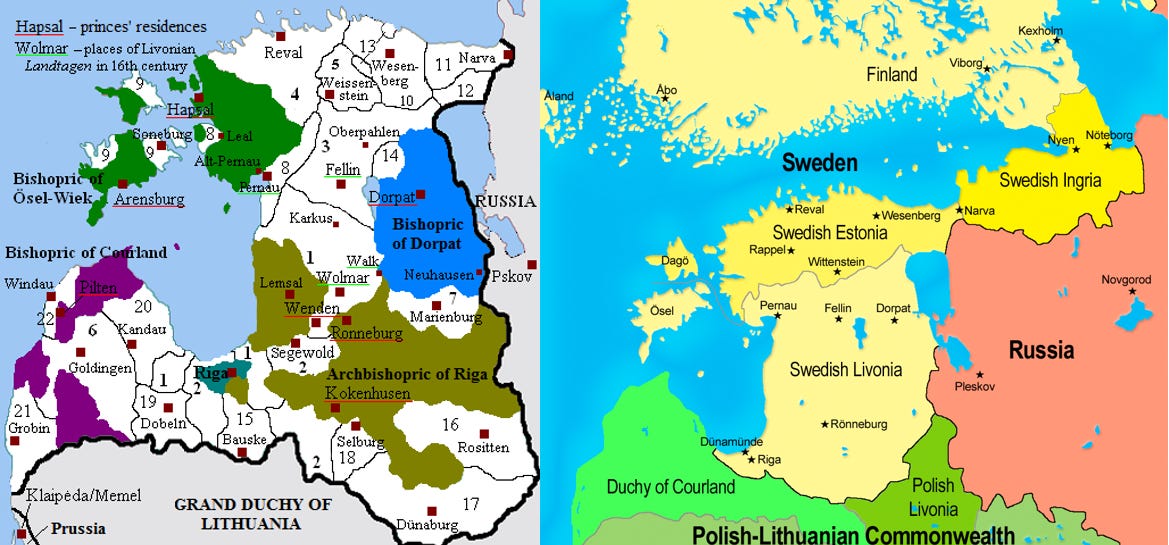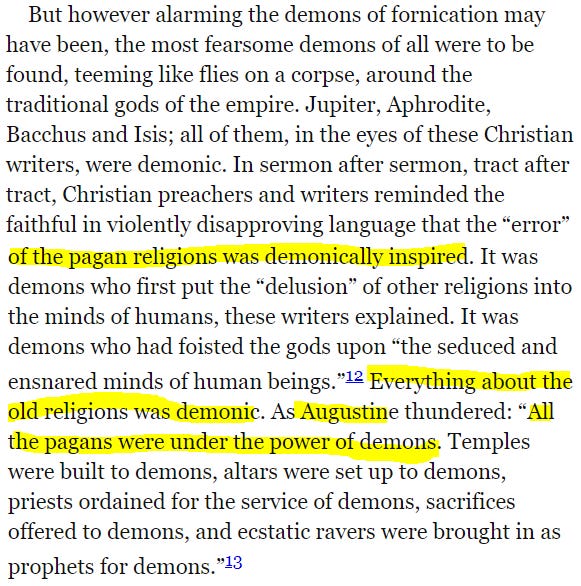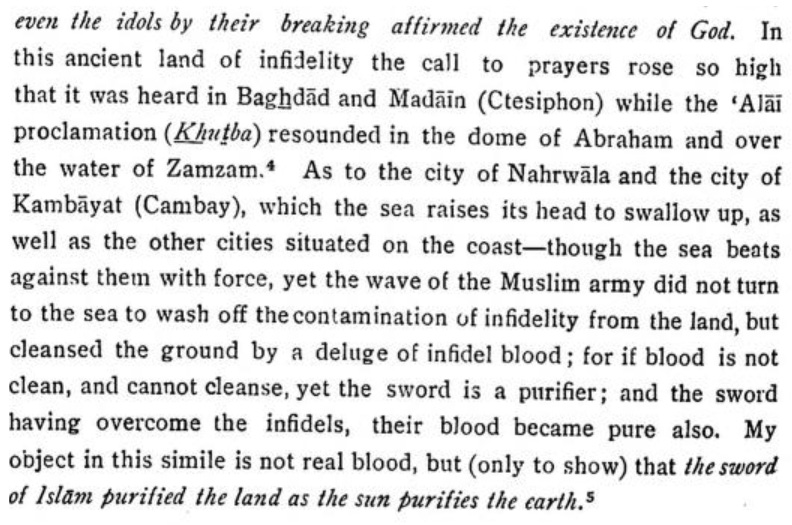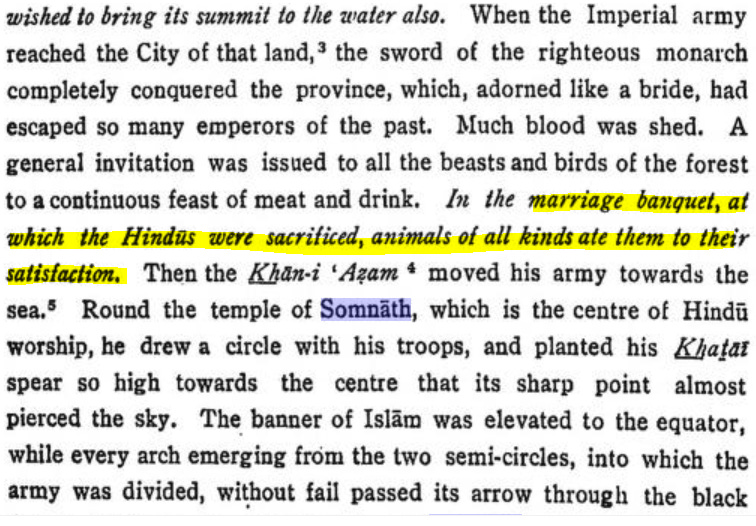Insightful newsletter of Drishtikone: Issue #285 - Exploring the Historical Context of Hinduphobia
Hinduphobia, and hatred against the Hindus, is increasing across the globe rampantly. Even in the top Western Universities. A look at history of why this happens and some insights
Image by Gerd Altmann from Pixabay
“I misjudged you,” Harvey said. “You’re not a moron. You’re only a case of arrested development.” ― Ernest Hemingway, The Sun Also Rises
Love can sometimes cease to continue, but hatred, specifically one that has doctrinal approval never relents. It changes its garb and ways, but continues until it achieves its goal - of conquest.
The victim, who is coopted as were the Greeks who had converted during the initial phase of Christianity - become the aggressors. And the new victims keep wondering - what is the motivation for the hatred that brings such aggression upon them?
It is time to ask the questions squarely - Why is hatred against Hindus being normalized at such a feverish pace so rampantly across the globe?
Does it have a lesson and insights from history?
Today is the Yezidi new year. Just like yesterday was the Hindu new year's day.


Interesting, isn’t it?
Attacks on the Hindus - Hinduphobia/Hindu-hatred?
There are attacks on Hindus around the world and specifically now in the Universities. In Rutgers and in Oxford, the authorities have dug their feet deeper to establish a reign of Hindu Hatred as the new normal.


Why is Hinduphobia, or rather Hindu Hatred so rampant? What is the source and motivation for such a relentless campaign of hate and bigotry around the world?
It is a question that is eating into the mind of most bewildered Hindus who have never tried to assert themselves religiously or ethnically and want to simply assimilate in the culture of their host nations and those within India are happy to integrate with the world at large. As migrants, they are in the highest percentile of academic achievements, tax-paying citizens, and business attainments. They are the least to bother the criminal justice systems and rarely found in jails.
Yet, the campaign of “othering” and dehumanizing Hindus, now the students, continues at a nauseatingly feverish pace.
Why?
The context to the questions - Righteousness and Virtue Signaling
In our earlier newsletter we had discussed the concept of righteousness and how it’s origin is in Christian theology (Issue #228 - The Righteousness Framework). Even though people use it - ironically - as a synonym of Dharma. Little knowing that Christian doctrinal understanding renders Dharma as inherently “unrighteous.”
Righteousness is a concept that is derived from Christian theology. It is “The quality of being morally right or justifiable.” (Source)
Only the Christian God, as the arbiter of morality, is the sole preserve of righteousness, as per theology in New Testament.
For, being ignorant of the righteousness that comes from God, and seeking to establish their own, they have not submitted to God’s righteousness. For Christ is the end of the law so that there may be righteousness for everyone who believes. (Source - Romans 10:3-13)
So basically faith in the death and resurrection of Jesus Christ is the only real way to achieve righteousness. A righteousness that isn’t yours but imputed to you via Christ through a transaction - your sin imputed to him and his righteousness imputed to you.
God, Christian God, is, therefore, the only valid source of righteousness. A quality that humans neither possess nor deserve as per Christian theology. Except for Christ, who inherits it from God.
In today’s world, the function of establishing righteousness is contemporarily played by virtue signaling.
Google (along with the Oxford dictionary) translates Virtue Signalling as this.
vir·tue sig·nal·ing: the action or practice of publicly expressing opinions or sentiments intended to demonstrate one's good character or the moral correctness of one's position on a particular issue.
This method resonates with the practice of the Church when they wanted to establish the Christian way, god and narrative as the only valid one and therefore the only source of morality.
Today, that function is accomplished via virtue signaling by overzealous celebrities. Zealous also having its origins in theological narratives.
It is important to understand how Christianity and Islam viewed the people they called “Pagans” - specifically in the context of their prejudices, biases, and attitudes as well as methods of conversion and then obfuscation of the aggression while maintaining the attack. The tactics and strategies that were used then in “othering” the Hindus and “Pagans” can be seen as the seeds for rampant Hinduphobia today.
The semantics of unbridled hatred may have changed, but the narrative, the perch of righteousness, and the “othering” of the people and their ways which are dehumanized by the “people of faith” continues unchanged.
So when we wonder at the relentless campaigns against the Hindus today globally and often question the reasons for such a motivation, we show our ignorance of the past 2000 years of continued attacks and aggression by two religious models of conquests - Christianity and Islam.
At the cross-hairs of both - Pagans and Hindus.
The method and tactics used - same.
The Christian Othering of Pagans
Bede, also known as Saint Bede and Bede the Venerable has written one of the most popular theological works in Christian history - “The Ecclesiastical History of the English People.” Bede was an 8th-century monk who acted as a historian and worked from the twin monasteries of Wearmouth and Jarrow in northern central England.
Another man Henricus Lettus wrote the book “The Chronicles of Henry of Livonia.” Henricus Lettus was a German-speaking monk who went to Livonia to convert the pagans there. His aim was to conquer the place and create a “Christian Empire” in the Baltic area. This book was chronicles of how he achieved his objective and it may have acted as a “progress report” to the Vatican officials on the crusades.
The historical area of Livonia is a combination of present-day Sweden, Finland, Latvia, and Estonia in the Baltic region.
These books chronicle the story of how Christianity dealt with the “Pagan” cultures and how they established the “Christian Empire” and constructed the narrative of Pagans being the “inferior others.”
When Europe was being Christianized, specifically starting from Rome, the practice of “othering” had started right there. Catherine Nixey writes in “The Darkening Age” (Source)
“Saint” Augustine, a revered figure in Christian history was no more than a rabble-rousing bigot who drew great satisfaction from attacks on the “Pagans.”
The Islamic “othering” of the Hindus: Case Studies of Babur and Amir Khusrau
A similar story also unfolded with the expansion of another religion - Islam. Baburnama is the autobiography of Mughal emperor Babur. It shares his mindset and idea of who Hindus were in his eyes.
In Baburnama, translated by Annette Susannah Beveridge (Source), the mindset of Babur is clearly visible. He posits Maharana Sangram (Rana Sanga) as an infidel, unbeliever, and pagan and discusses how the “sword of Islam” had illumined the land of Hindustan.
In fact, this idea of “purifying Hindustan by the sword of Islam” is not just Babur’s alone. It was shared even by Amir Khusrau in his chronicle on his friend Allauddin Khilji called “Khaza inul Futuh” (which means “Treasure/Booty of Victory in War”) (Source)
The last part, where the translator Muhammad Habib, Professor of History, Aligarh Muslim University, tries to normalize the mindset of Amir Khusrau, is disingenuous. Because this paragraph followed the description of the destruction of Somnath. The blood was real, not a “simile.”
This “othering” of the Hindus and treating them as inferior humans - even creatures - fit to be killed such that the sword that killed them would purify the land where such infidels lived and called home is the way that Christianity and Islam have conspired to annihilate the people and beliefs that were indigenous and spiritual.
Philip Busalacchi writes in his article on the California State University site titled “Medieval Christian and Muslim Constructions of the Pagan ‘Other’”
Busalacchi’s argument on why the Christian and Islamic sources and rulers used a civilizational argument against the Pagans/Hindus to not just kill them but do it with a morality backed righteousness was because it provided a way to distinguish the target of their hate or as the writer says “separated the writers from those who did not share their religious convictions by attempting to construct them as “infidels” or “heathens” and culturally inferior,” and to also dehumanize the “other.”
What is surprising is that even when both, the Christian and the Muslims differed radically in their world view, none of them ever substantively discussed what a “civilized society” really was. Just that the “other” was barbaric and uncivilized. And, their own righteousness was because it was.. well, their belief. A belief forced upon by sword. To “purify the land of infidels by flowing the blood of the infidels”.
The treachery of their narrative is remarkable even as it is egregiously bigoted.
market corner: 10 quick bytes
Over 25 cities to have metro rail networks in coming years: Ashutosh Shukla, Schneider Electric India - more
BIS certification: Govt offers 50% concession for micro-enterprises, women entrepreneurs, startups - more
Infosys attrition rises to 15%, likely to continue in next two quarters: COO Pravin Rao - more
CEOs and CXOs in India to get 6% pay hike in 2021 - more
GST collections to drop 20% in May due to state lockdown-like curfews, say, experts - more
Coinbase listing marks the latest step in crypto's march to the mainstream - more
Amazon moves Supreme Court against Delhi HC stay order restraining Future Retail deal with Reliance - more
WhatsApp cannot be used to register for COVID-19 vaccination; govt clarifies - more
UAE to send a rover to the Moon in 2022 - more
Dr. Reddy's working on stability data on 2 to 8 degrees temperature range for Sputnik V vaccine - more
nota bene
COVID cases Double in 10 days in India: India reported nearly 2 lakh fresh Covid-19 cases on Wednesday, with the daily case count almost doubling in 10 days amid an unprecedented surge in the pandemic. A total of 1,99,620 new cases was recorded, just 380 short of the 2-lakh milestone, a mere 10 days after the single-day case tally had crossed 1 lakh, as per TOI’s data collated from state governments. (Source)
Chinese Vaccine Useless: In a rare acknowledgment, the top Chinese official for disease control said that the current vaccines developed in the country don’t offer a high enough protection rate for the Coronavirus and that China is considering mixing different vaccines in order to boost effectiveness. “We will solve the issue that current vaccines don’t have very high protection rates,” Gao Fu, director of the Chinese Center for Disease Control and Prevention, told a conference in the southwestern Chinese city of Chengdu on Saturday. (Source)
US Pull-out: US President Joe Biden said on Wednesday he will withdraw remaining US troops from the "forever war" in Afghanistan, declaring that the September 11 terror attacks of 20 years ago cannot justify American forces still dying in the nation's longest war. His plan is to pull out all American forces - numbering 2,500 now - by this September 11, the anniversary of the attacks, which were coordinated from Afghanistan. Soon after Biden made his announcement, Nato chief Jens Stoltenberg in Brussels said the alliance had agreed to withdraw its roughly 7,000 forces from Afghanistan, matching Biden's decision to begin a final pullout by May 1. (Source)
Pimple-Popping: The average American woman pops a total of 65 pimples annually. That’s 4,153 zits in the average U.S. woman’s adult lifetime! A survey of 2,000 U.S. women is revealing the not-so-dermatologist-recommended ways respondents are taking the process of revitalizing their skin into their own hands – in some cases, quite literally. (Source)
Noise hurts Plants: A growing body of research has shown how noise pollution adversely affects animal behaviour – but a study suggests the detrimental effects have trickled down to plants as well. The researchers found that pinyon seedlings were found less in noisy areas (in line with the 2007 findings) and the saplings (plants between two and 12 years old) were also less abundant in the persistently loud environment. The same pattern was observed in the juniper plants. (Source)
video corner: Search for Shangri-la
There has always been this urge to search for Utopia on our planet. Little understanding that happiness and sorrow is all within.
In a 1933 novel “The Lost Horizon,” James Hilton wrote about a place in the Himalayas which was called Shangri-la. The Utopia where people lived to over 200 years.
Based on James Hilton's 1933 novel Lost Horizon, five themes are identified that might compose the core of Shangri-La's popular image. These themes serve as an organizational framework for examination of Pakistan's Hunza Valley, the so-called "Shangri-La of the Karakorams." It is concluded that as sublime as parts of the valley may be, it is not now and has never been the Utopian place that some would have it. The quest for such a place, however, illustrates the universal conflict between the real and the idealized in nature. (Source)
Here is an interesting exploration that David Adams undertook to look for such a place. Very informative and interesting video. Specifically about how those areas now look like.
Today’s ONLINE PAPER: Check out today’s “The Drishtikone Daily” edition. - THE DRISHTIKONE DAILY
Nuzzle Tweets “newsletter” - with tweets and stories that we read and follow in a day in one compilation on a daily basis - Nuzzle Drishtikone - just another way to keep up with things
SUPPORT DRISHTIKONE: If you consider our work important and enriching and would like to contribute to our expenses, please click on the button below to go to the page to send in your contribution. You can select the currency (for example, INR or USD, etc) and the amount you would like to contribute. Contribute to Drishtikone
If you like this post - please share it with someone who will appreciate the information shared in this edition
If you like our newsletter, please share it with your friends and family










